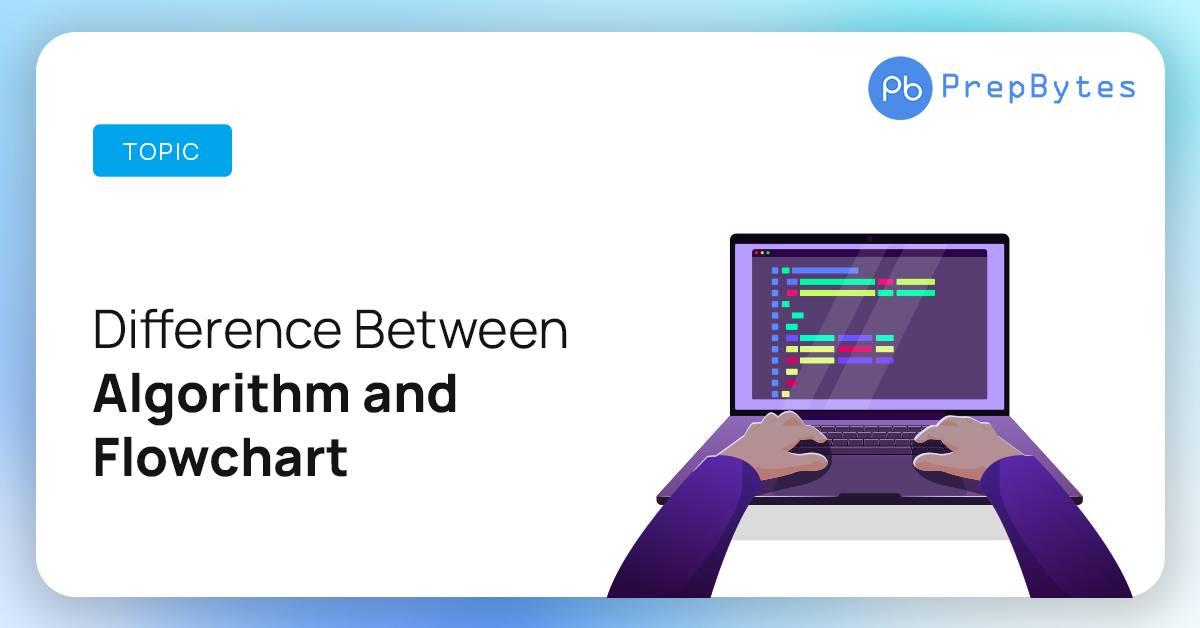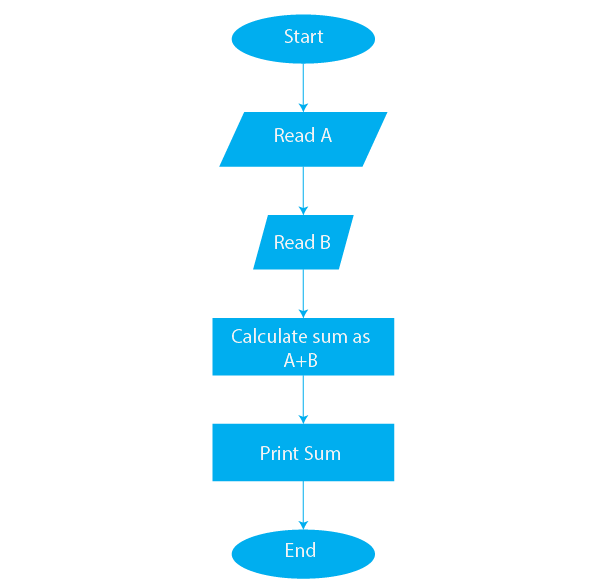Last Updated on December 26, 2023 by Ankit Kochar

In the realm of computer science and problem-solving methodologies, two essential concepts play a pivotal role: algorithms and flowcharts. These elements are fundamental to understanding and designing efficient processes, particularly in the context of programming and algorithmic development. While both are tools used to depict the logical steps of a solution, they serve distinct purposes and cater to different stages of problem-solving. This exploration aims to elucidate the disparity between algorithms and flowcharts, shedding light on their individual characteristics, applications, and significance in the world of computation.
What is an Algorithm?
The algorithm can be understood as the set of instructions that are followed by the developer or programmer to perform a specific task or solve a problem. It is not a random procedure it is a well-defined procedure that takes the input, solves or processes it, and after that return that output. The algorithms are used in various fields like physics, chemistry, mathematics, engineering, and computer science. We can use algorithms to solve a wide range of problems ranging from simple calculations to complex data analysis.
The algorithm must satisfy the given below criteria.
- The algorithm must provide the correct output for the given input.
- The algorithm must finish or terminate in a finite number of steps.
- The algorithm must be efficient in using the resources.
- The algorithm must be easy and clear to understand.
Typically, algorithms are written in a high-level language like Python, C++, or Java. Programmers can create code using high-level languages in a more linguistically similar manner, which makes it simpler to read and change. Once an algorithm is expressed in a high-level language, it can be translated into executable code that can be executed on a computer by compilation or interpretation.
Example of Algorithm
In this section, we will see an example to write an algorithm to print numbers from 1 – 15.
- Step 1: Initialize the variable i by 0.
- Step 2: Increment the value of x by 1.
- Step 3: print the values of the variable i.
- Step 4: If i is less than 15 then go back to step 2 otherwise implement the next step.
- Step 5: Exit.
Advantages of Algorithms
Below are some of the advantages of algorithms
- Algorithms are precise and consistent which gives precise results.
- Solving problems by using algorithms is more efficient than solving them by hit and trial method.
- They can be used repeatedly and can be replicated easily.
- We can use algorithms to automate various tasks like decision-making and data analysis.
Disadvantages of Algorithms
Some of the disadvantages of algorithms are given below.
- Sometimes algorithms are complex and a bit difficult to understand.
- Algorithms only work on the specified data and they will not work on all domains.
- If the algorithms are based on wrong or faulty data then they will give wrong outputs.
- Because of the algorithm, it is sometimes hard to trace the problem.
What is Flowchart?
An algorithm is graphically depicted in a flowchart. It represents the numerous stages required to solve a problem using symbols and diagrams. Flowcharts are used to show how information or data flows through a process. They are utilized to quickly and effectively convey complex concepts and processes.
Different kinds of processes or actions are represented by a standard collection of characters in flowcharts. Programmers make the flowchart by using pen and pencil. For large programs, a flowchart proves to be a useful representation for finding the flow of the code.
We can flowchart using many tools like draw.io, Microsoft Visio, and Lucidchart.
You can refer to this article to know about flowcharts in detail.
Example of Flowchart
Here is an example of a flowchart for adding two numbers.

Advantages of Flowchart
Some of the advantages of flowcharts are given below.
- They are the visual representation of the process.
- They can be created easily and quickly using software tools.
- They can help in improving collaboration and communication between team members.
- They can help in detecting errors and flaws.
Disadvantages of Flowcharts
Below are some of the advantages of flowcharts.
- They are not able to represent a complex process in a concise manner.
- Flowcharts are time-consuming, especially for large processes.
- Sometimes flowchart leads to misinterpretation if not designed properly.
Difference between Algorithm and Flowchart
In this section, we will learn about some points of difference between algorithm and flowchart.
| Parameter | Algorithm | Flowchart |
|---|---|---|
| Representation | It is represented in high-level language | It is represented using symbols and diagrams. |
| Abstraction | It describes the steps involved in solving a problem. | It provides a more detailed view of the steps involved in solving a problem. |
| Flexibility | It is more flexible compared to a flowchart. | It is less flexible compared to the algorithm. |
| Precision | They are more precise than flowcharts. | They are less precise than algorithms. |
| Execution | An algorithm is executed by a computer. | Flowchart is a visual aid for understanding the algorithm. |
| Portability | They are portable and can be used in different environments and platforms. | They need to be modified before moving to other platform or environment. |
Conclusion
In conclusion, the difference between algorithms and flowcharts lies in their nature and purpose within the problem-solving process. An algorithm is a step-by-step set of instructions designed to perform a specific task or solve a problem, providing a blueprint for the solution. On the other hand, a flowchart is a graphical representation of the algorithm, offering a visual aid to comprehend the logical flow of the solution. While algorithms serve as the core logic, flowcharts act as a communication tool, aiding in the visualization and communication of complex processes. Both are indispensable components in the realm of computer science, working in tandem to facilitate efficient problem-solving and algorithmic development.
Frequently Asked Questions on Difference Between Algorithm and Flowchart
Here are some of the frequently asked questions about the difference between algorithms and flowchart.
1. Explain how the algorithm and flowchart are related?
Flowcharts are used to represent algorithms visually.
2. Name some of the common symbols used in flowcharts?
Common symbols used in flowcharts include start/end symbols, input/output symbols, process symbols, decision symbols, and connector symbols.
3. How are algorithms and flowcharts related?
Algorithms and flowcharts are closely related in the sense that an algorithm serves as the underlying logical structure, while a flowchart provides a visual representation of that structure. The flowchart helps in understanding the algorithm’s flow, making it easier to communicate and analyze.
4. Can an algorithm exist without a flowchart?
Yes, an algorithm can exist without a flowchart. An algorithm is essentially a set of logical instructions, and while a flowchart is a helpful visualization tool, it is not mandatory for the existence or implementation of an algorithm.
5. Are flowcharts only used in computer science?
While flowcharts find extensive use in computer science and programming, they are not limited to this domain. Flowcharts are versatile tools and can be employed in various fields, including business processes, engineering, education, and more, to represent and analyze complex processes.


